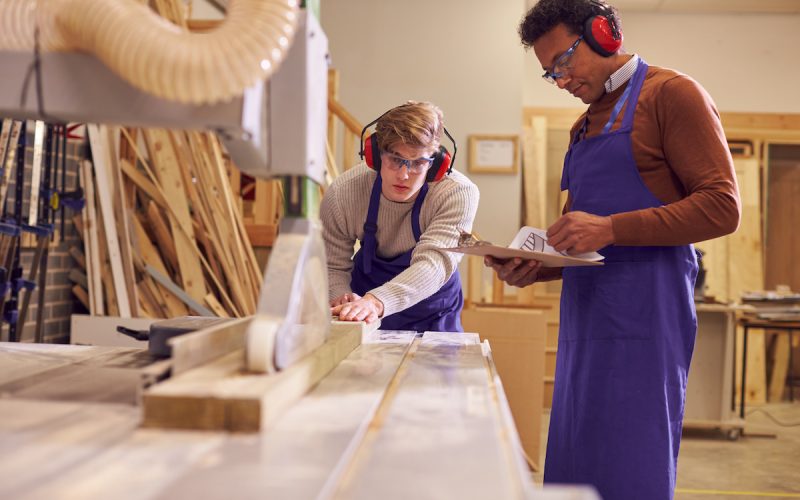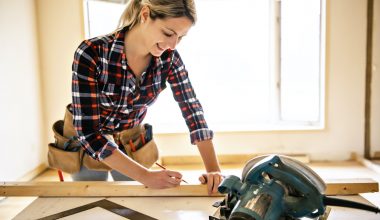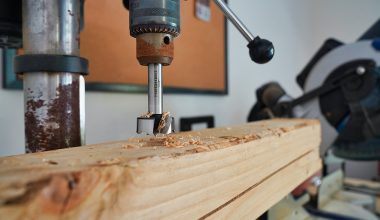Woodworking is a great hobby and skill where you will always be improving and learning. But it even though woodworking may seem like a low-risk hobby there are estimated to be over 720,000 injuries a year. It is important to maintain table saw safety at all times in the workshop to reduce injury.
A study of 1000 amateur woodworker injuries found that 42% of injuries were caused by a table saw. 37% of respondents reported the amputation of at least one digit. Unfortunately, it isn’t surprising that the highest percentage of injuries is from table saws. They are the most commonly used power saw in the workshop. This does mean however that the safety features of a table saw are essential to understand. Therefore minimizing injuries to yourself and others.
Always Be Prepared
The first step to reducing injuries in your shop is to prevent them by being aware and trained for your equipment. It is also always worth being prepared for injuries when using sharp tools and heavy equipment.
We recommend that you take a basic first aid course so that even if you are on your own you know the first steps to take. Have a properly equipped first aid kit that is easily accessible at all times. A great place is behind the door as it is often within reaching distance in most workshops. Also make sure your workshop is clean and tidy, reducing the chance of tripping over anything or falling objects.
Table Saw Safety Features
SawStop Brake
One of the biggest advancements in recent years for table saws is the SawStop safety brake mechanism. It senses electrical currents through the material you are cutting. If it senses current then the cartridge immediately stops the blade and drops it quickly below the table surface. This is great for stopping g you from accidentally cutting one of your fingers off when you lose concentration.
The break works by engaging the blade as soon as it senses a conductive material, such as your finger. Setting off the system does ruin the brake cartridge, but the blade might be able to be repaired. The blade and break combination is a straightforward machine that with a bit of knowledge can be replaced in under a minute.
If you are cutting a material that does conduct electricity you will have to use bypass mode on the main switch. To save yourself from not using a cartridge unnecessarily when you’re not sure if your material is conductive you can put it into bypass mode and watch the indicator lights.
Kickback
One of the most common table saw injuries is kickback. Kickback occurs when the material binds with the teeth at the back of the saw blade. The result is your material flying back at you at high speed, often causing damage and bruising.
To stop kickback, we would recommend having a riving knife installed. They sit at the back of the blade and slightly over the top. Riving knives also move up and down as the blade does on the arbor. By sitting at the back of the saw they stop the material from pinching and touching the blade which would otherwise cause kickback.
An alternative to a riving knife is a table saw splitter. These are similar but with one crucial difference, they don’t move up and down with the blade on the arbor. Plus, when making a crosscut or dado cut they have to be removed. If you only make through cuts then a splitter might be suitable but we would recommend a riving knife to most users.
Anti-kickback Pawls are attached to either a splitter or riving knife. They are teeth on a spring that dig into the material as it passes through the saw blade. Because the teeth dig in they make your material more secure and stop it from coming back towards you if for some reason kickback does happen. However, similar to a splitter they can only be used for through cuts.
Blade Guard
A blade guard seems like the most obvious of table saw safety features as it creates a physical barrier between the saw blade and your hands. However, many woodworkers don’t use them as they find them annoying and a hindrance to their work. We think that after a little practice they are just as easy to use compared to without and it is worth it for improved safety.
Blade guards are attached to a riving knife and sit above the blade. Often made from a clear material such as plexiglass so that you can still see where you are cutting. If you are a beginner we would highly recommend using a blade guard. It helps to remind you that there is a sharp blade there at all times.
Table Saw Safety Accessories
There are some table saw accessories that we thought we had to include as they make life easier and safer.
Miter Sled
A miter sled or table sled is a jig that can be built to help cut any angle you may need. By using a sled, you can have dedicated handholds far away from the saw blade and allow the sled to support the material close to the blade. There are many different designs that can be built for various applications. They follow along the miter groove in your table for accuracy and repeatability.
Table Fence
A table saw fence provides a solid surface for you to guide your material against whilst cutting. A good technique is to run your finger along the fence whilst holding down your material. This keeps your hands far away from the blade while maintaining contact with the material. You can buy some excellent aftermarket table saw fences that can greatly improve the effectiveness of your table saw.
Push Stick
Every woodworker has their favorite push stick for their table saw. We have even built our own in the past. They are often made from wood or plastic. Built to provide a safe way of holding your material whilst keeping your hands far away from the saw blade.
Final Word
It is important to be fully aware of your surroundings and environment before you use your table saw. It is good practice to let someone else known that you are using powerful equipment in case you have an accident. We also highly recommend that you should never freehand anything with a table saw.






